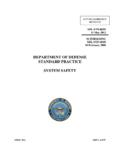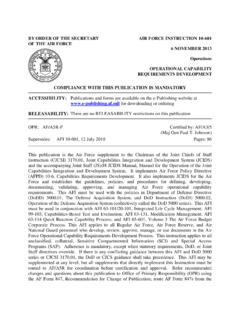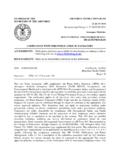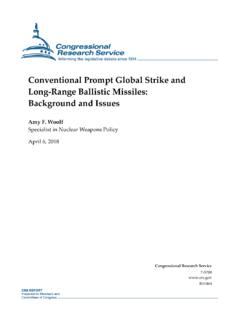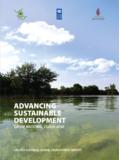Transcription of DEPARTMENT OF DEFENSE STANDARD PRACTICE …
1 NOT MEASUREMENT SENSITIVE MIL-STD-882E 11 May 2012 SUPERSEDING MIL-STD-882D 10 February 2000 DEPARTMENT OF DEFENSE STANDARD PRACTICE system safety AMSC N/A AREA SAFT MIL-STD-882E ii FOREWORD 1. This STANDARD is approved for use by all Military Departments and DEFENSE Agencies within the DEPARTMENT of DEFENSE (DoD). 2. This system safety STANDARD PRACTICE is a key element of Systems Engineering (SE) that provides a STANDARD , generic method for the identification, classification, and mitigation of hazards. 3. DoD is committed to protecting personnel from accidental death, injury, or occupational illness and safeguarding DEFENSE systems, infrastructure, and property from accidental destruction, or damage while executing its mission requirements of national DEFENSE .
2 Within mission requirements, the DoD will also ensure that the quality of the environment is protected to the maximum extent practical. Integral to these efforts is the use of a system safety approach to identify hazards and manage the associated risks. A key DoD objective is to expand the use of this system safety methodology to integrate risk management into the overall SE process rather than addressing hazards as operational considerations. It should be used not only by system safety professionals, but also by other functional disciplines such as fire protection engineers, occupational health professionals, and environmental engineers to identify hazards and mitigate risks through the SE process.
3 It is not the intent of this document to make system safety personnel responsible for hazard management in other functional disciplines. However, all functional disciplines using this generic methodology should coordinate their efforts as part of the overall SE process because mitigation measures optimized for only one discipline may create hazards in other disciplines. 4. This system safety STANDARD PRACTICE identifies the DoD approach for identifying hazards and assessing and mitigating associated risks encountered in the development, test, production, use, and disposal of DEFENSE systems. The approach described herein conforms to DEPARTMENT of DEFENSE Instruction (DoDI) DoDI defines the risk acceptance authorities.
4 5. This revision incorporates changes to meet Government and industry requests to reinstate task descriptions. These tasks may be specified in contract documents. When this STANDARD is required in a solicitation or contract, but no specific task is identified, only Sections 3 and 4 are mandatory. The definitions in and all of Section 4 delineate the minimum mandatory definitions and requirements for an acceptable system safety effort for any DoD system . This revision aligns the STANDARD PRACTICE with current DoD policy; supports DoD strategic plans and goals; and adjusts the organizational arrangement of information to clarify the basic elements of the system safety process, clarify terminology, and define task descriptions to improve hazard management practices .
5 This STANDARD strengthens integration of other functional disciplines into SE to ultimately improve consistency of hazard management practices across programs. Specific changes include: a. Reintroduced task descriptions: (1) 100-series tasks Management. (2) 200-series tasks Analysis. MIL-STD-882E iii (3) 300-series tasks Evaluation. (4) 400-series tasks Verification. b. Emphasized the identification of applicable technical requirements. c. Included additional tasks: (1) Hazardous Materials Management Plan. (2) Functional Hazard Analysis. (3) Systems-of-Systems Hazard Analysis. (4) Environmental Hazard Analysis. d. Applied increased dollar values for losses in severity descriptions.
6 E. Added Eliminated level for probability. f. Added software system safety techniques and practices . g. Updated appendices. 6. Comments, suggestions, or questions on this document should be addressed to Headquarters Air Force Materiel Command/SES ( system safety Office), 4375 Chidlaw Road, Wright-Patterson Air Force Base, OH 45433-5006 or emailed to Since contact information can change, you may want to verify the currency of this address information using the Acquisition Streamlining and Standardization Information system (ASSIST) online database at MIL-STD-882E iv CONTENTS PARAGRAPH PAGE FOREWORD ..ii 1. SCOPE ..1 Scope ..1 2.
7 APPLICABLE DOCUMENTS ..1 General ..1 Government documents ..1 Specifications, standards , and handbooks ..1 Other Government documents, drawings, and publications ..2 Order of precedence ..2 3. DEFINITIONS ..2 Acronyms ..2 4. GENERAL REQUIREMENTS ..9 General ..9 system safety requirements ..9 system safety process ..9 Document the system safety approach .. 10 Identify and document hazards .. 10 Assess and document risk .. 10 Identify and document risk mitigation measures .. 12 Reduce 13 Verify, validate, and document risk reduction .. 13 Accept risk and document .. 13 Manage life-cycle 14 Software contribution to system risk.
8 14 Software assessments .. 14 Software safety criticality matrix .. 16 Assessment of software contribution to risk .. 17 5. DETAILED REQUIREMENTS .. 18 Additional 18 Tasks .. 18 Task structure .. 18 6. NOTES .. 18 Intended use .. 18 Acquisition requirements .. 18 Associated Data Item Descriptions (DIDs) .. 19 MIL-STD-882E v CONTENTS PARAGRAPH PAGE Subject term (key word) 19 Changes from previous issue .. 20 TASK SECTION 100 - MANAGEMENT TASK 101 HAZARD IDENTIFICATION AND MITIGATION EFFORT USING THE system safety METHODOLOGY .. 22 TASK 102 system safety PROGRAM PLAN .. 24 TASK 103 HAZARD MANAGEMENT PLAN .. 30 TASK 104 SUPPORT OF GOVERNMENT REVIEWS/AUDITS.
9 36 TASK 105 INTEGRATED PRODUCT TEAM/WORKING GROUP SUPPORT .. 37 TASK 106 HAZARD TRACKING system .. 38 TASK 107 HAZARD MANAGEMENT PROGRESS REPORT .. 40 TASK 108 HAZARDOUS MATERIALS MANAGEMENT PLAN .. 41 TASK SECTION 200 - ANALYSIS TASK 201 PRELIMINARY HAZARD LIST .. 44 TASK 202 PRELIMINARY HAZARD ANALYSIS .. 46 TASK 203 system REQUIREMENTS HAZARD ANALYSIS .. 49 TASK 204 SUBSYSTEM HAZARD ANALYSIS .. 51 TASK 205 system HAZARD ANALYSIS .. 54 TASK 206 OPERATING AND SUPPORT HAZARD ANALYSIS .. 57 TASK 207 HEALTH HAZARD ANALYSIS .. 60 TASK 208 FUNCTIONAL HAZARD ANALYSIS .. 68 TASK 209 system -OF-SYSTEMS HAZARD ANALYSIS .. 71 TASK 210 ENVIRONMENTAL HAZARD ANALYSIS.
10 73 TASK SECTION 300 - EVALUATION TASK 301 safety ASSESSMENT REPORT .. 78 TASK 302 HAZARD MANAGEMENT ASSESSMENT 80 TASK 303 TEST AND EVALUATION PARTICIPATION .. 82 TASK 304 REVIEW OF ENGINEERING CHANGE PROPOSALS, CHANGE NOTICES, DEFICIENCY REPORTS, MISHAPS, AND REQUESTS FOR DEVIATION/WAIVER .. 84 TASK SECTION 400 - VERIFICATION TASK 401 safety VERIFICATION .. 86 TASK 402 EXPLOSIVES HAZARD CLASSIFICATION DATA .. 88 TASK 403 EXPLOSIVE ORDNANCE DISPOSAL DATA .. 89 MIL-STD-882E vi CONTENTS PARAGRAPH PAGE APPENDIX A GUIDANCE FOR THE system safety EFFORT ..90 APPENDIX B SOFTWARE system safety ENGINEERING AND ANALYSIS ..92 FIGURES PAGE 1.
